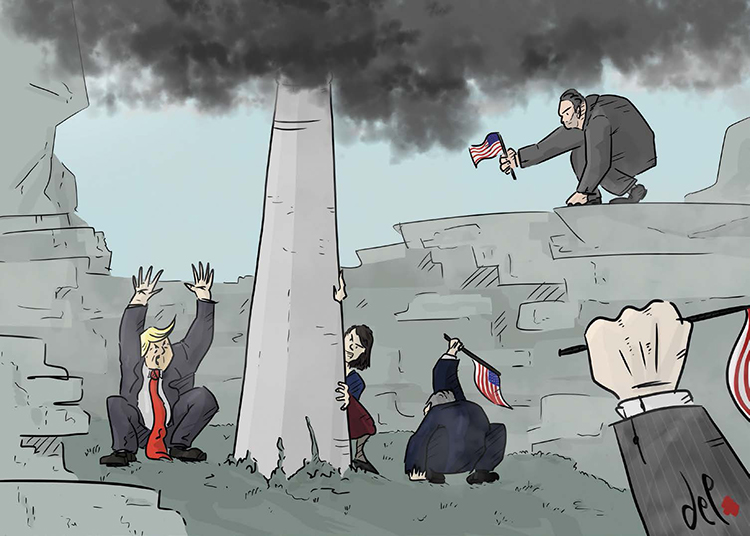This coloured history includes Henry David Thoreau’s Walden, a work of literary and personal discovery, John Muir’s conservationism, Rachel Carson’s denouncement of pesticides in Silent Spring, and the anti-nuclear environmentalist movement. And the list goes on: Lester Brown’s research and work with the Worldwatch Institute; Amory Lovins and his Rocky Mountain Institute; and Bill McKibben, founder of the first global movement to put an end to climate change. Finally, in recent times we have seen the birth of the Sunrise Movement and a wave of popular support for the Green New Deal, embodied by Congresswoman Alexandria Ocasio-Cortez (AOC). However, in spite of all this, the propagation of the circular economy concept in the US has been limited. Until a few months ago the term was virtually absent from both public and specialised discourse. There were few events related to the topic, minimal media coverage and total ignorance of the theory, even among experts and professionals.
But things are changing and they are changing fast. The US has started to focus on the topic of circular economy in both the public and private sectors: a progression featured in this issue of Renewable Matter. In 2020, circularity will flourish in the States. The MacArthur Foundation has played a big part in this, investing resources and know-how, but there are other contributing factors: the crisis of waste exports to Asia, the plastics emergency and the impending climate emergency, all of which made worse by a President who has vowed to abandon the Paris Accord no matter the cost. In fact, the White House has thus far been blind to the potential of the circular revolution. How likely is the Trump administration, set on its nationalist and protectionist path, to seriously consider joining forces with the Democrats for a Circular Economy Act? The trade war currently being waged by the US on all fronts clearly shows its dependence on a linear economy: a significant portion of natural resources – such as rare earths – are extracted and processed on foreign soil, creating products that are sent to the US to be consumed and disposed of (with almost 65% of municipal waste destined for landfill). This process is a major contributor to the trade deficit that Trump finds so contemptible. An American circular economy would increase resilience and commercial security, allowing certain sectors to become more independent from the global supply chain.
Meanwhile, for Democrat presidential hopefuls a Circular Economy Act represents an environmentalist solution that could allow wide-ranging possibilities, in line with AOC’s Green New Deal, to reduce the country’s ecological footprint, relaunch research and tackle the issue of climate, circumventing Republican obstacles. And perhaps such legislation will also improve public consciousness on environmental matters, leading people to consume less and be more aware of the end-of-life potential of the enormity of products that are thrown away each day, from food waste to single-use plastics.
And what would the long term effects be? First of all, emissions linked to the extraction, production and consumption of services would decrease, while also addressing complaints from climate deniers who may, in fact, approve of increased trade independence from China and an end to US dependence on other countries for the disposal and recycling of waste. A circular economy, applied extensively at the federal level, would not only align American and European industrial production (which could allow for joint research programmes and repair fractured diplomatic relations), it would also significantly increase the pace of research into circular solutions. A bipartisan win-win, on all fronts. So, who is going to get this issue of Renewable Matter on Donald Trump’s desk?
Sunrise, www.sunrisemovement.org



